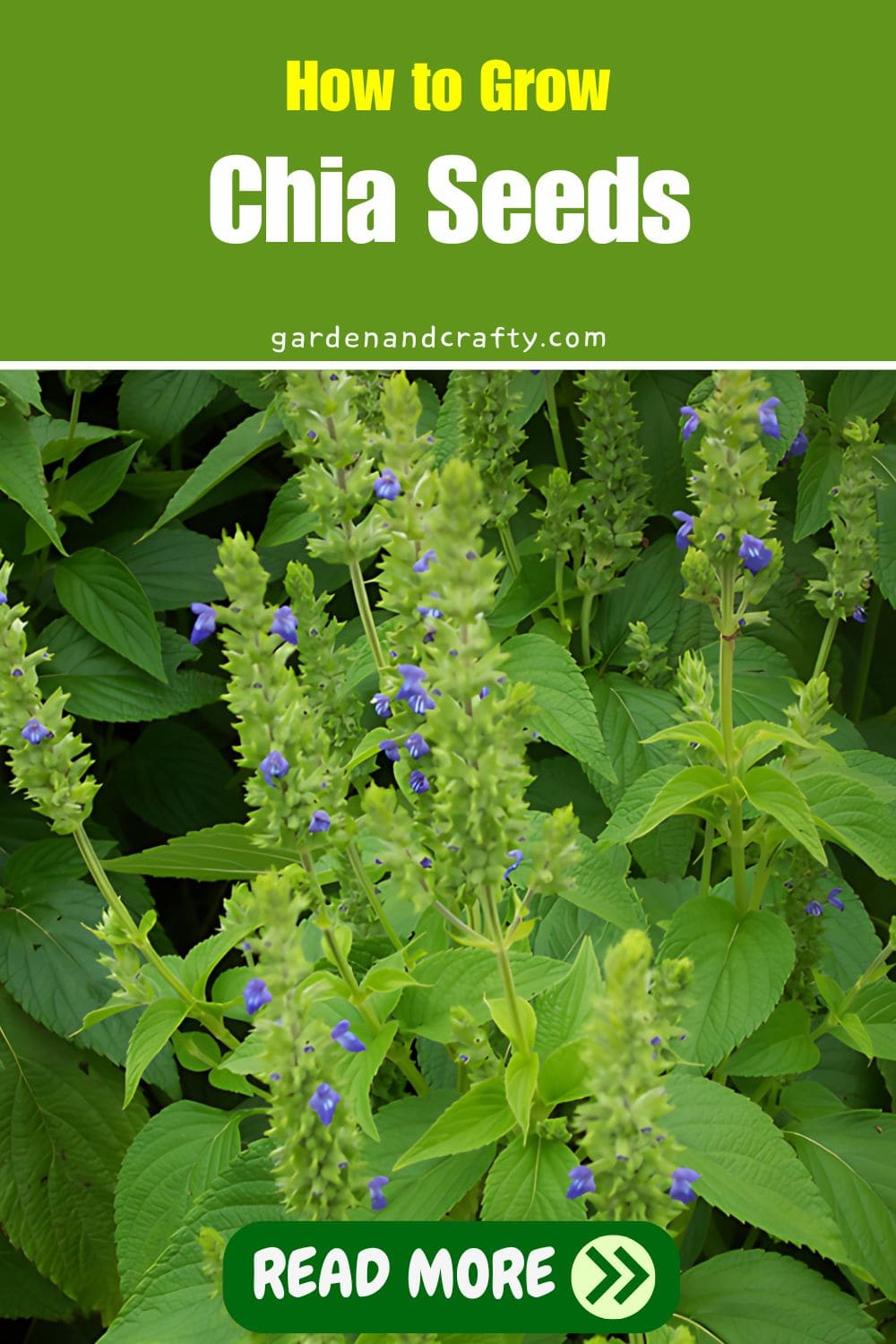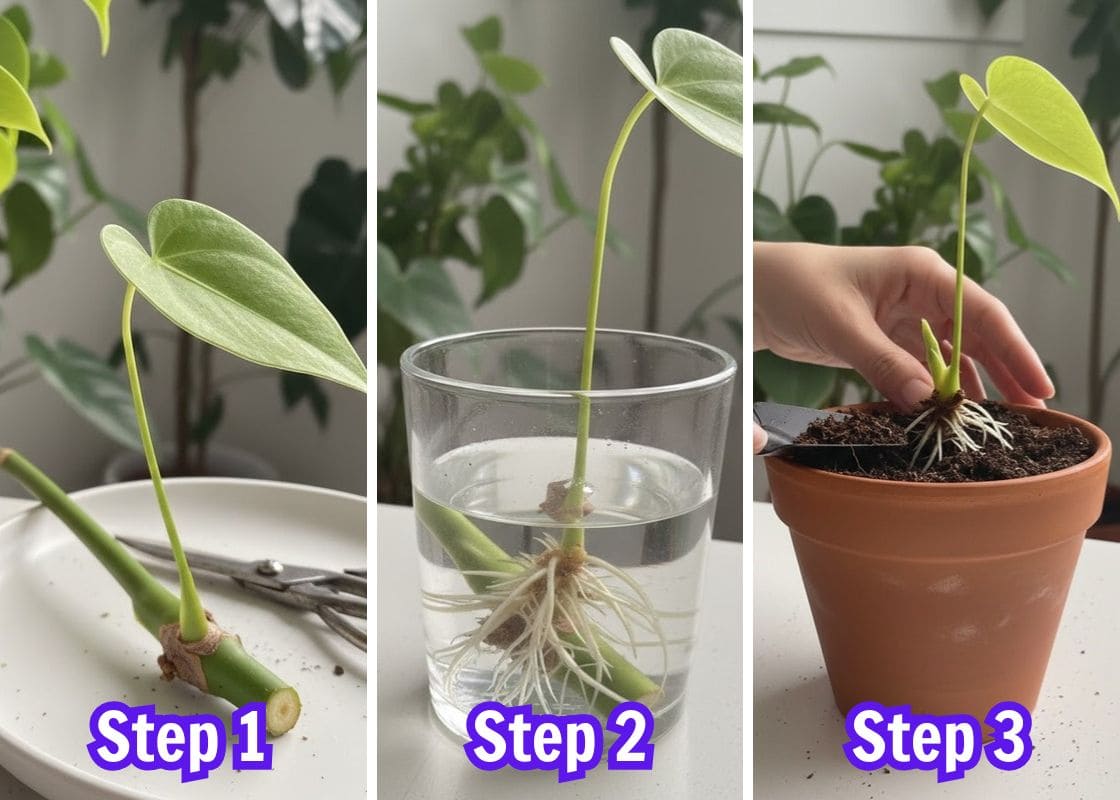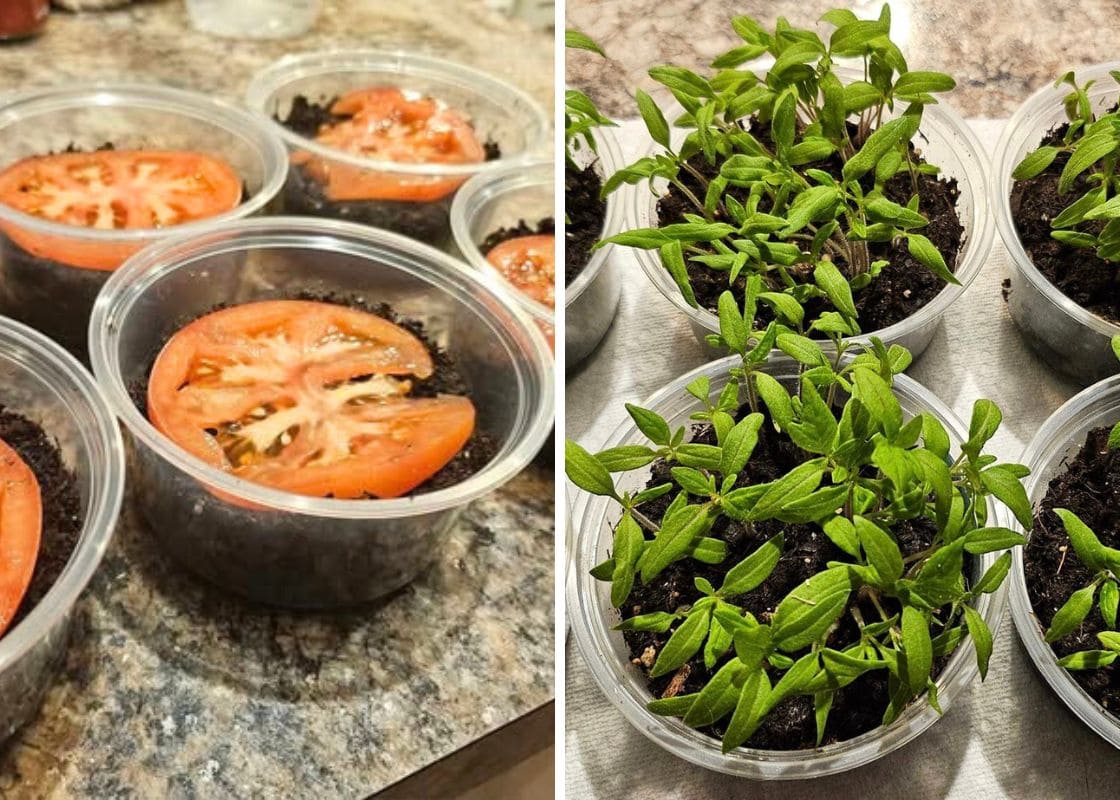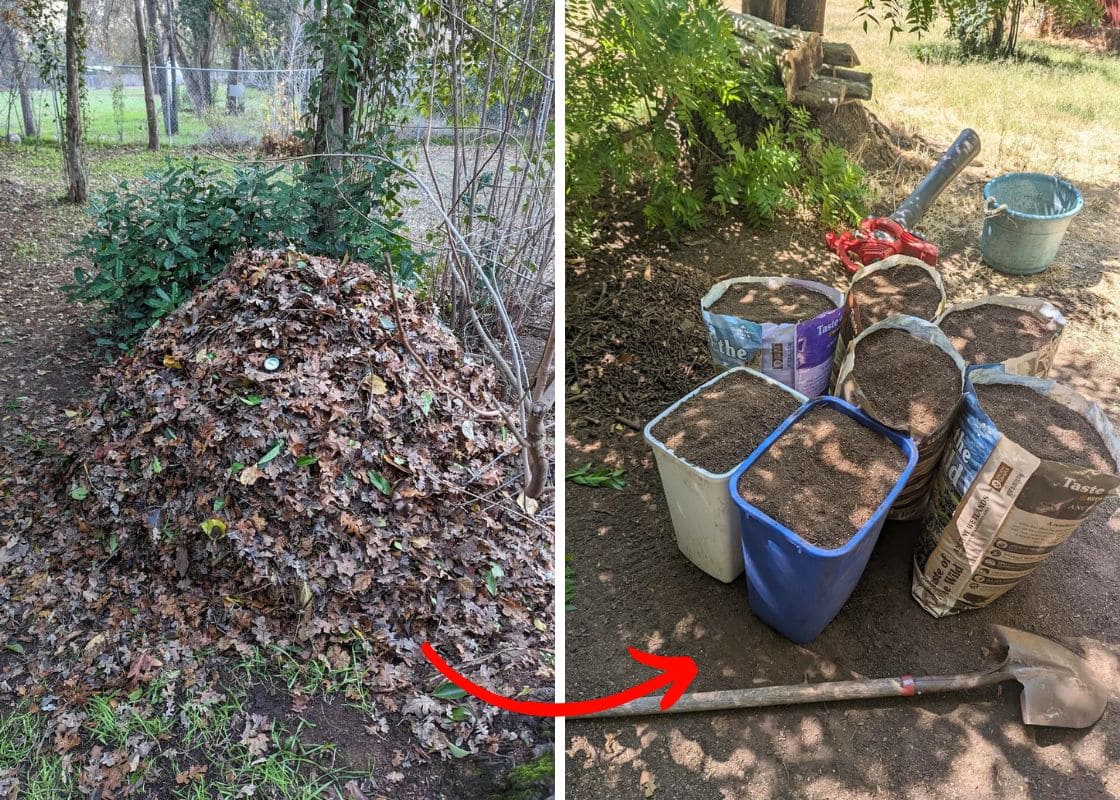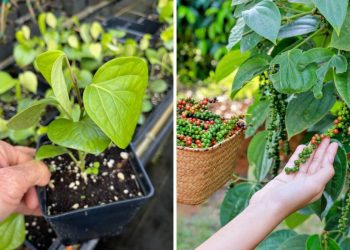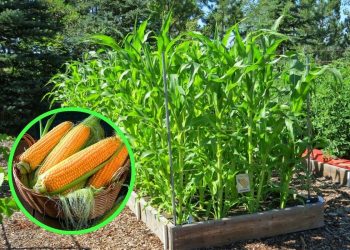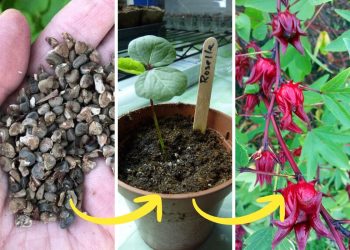Chia seeds come from the Salvia hispanica plant, native to Central and Southern Mexico, and are renowned for their incredible health benefits.
They are packed with omega-3 fatty acids, fiber, protein, and antioxidants and are able to improve heart health, and boost your energy levels.
Cultivating chia seeds is not only beneficial for your diet but also a joy for any gardener.
Whether you have a spacious garden or a small balcony, chia plants are remarkably easy to grow and require minimal care.
Summary:
- Chia seeds are highly nutritious, offering many health benefits.
- Chia plants thrive in warm temperatures (70-85°F) and require well-drained soil.
- They are easy to grow and care for once established.
- Harvest chia seeds when the flowers turn brown and dry and store them in containers.
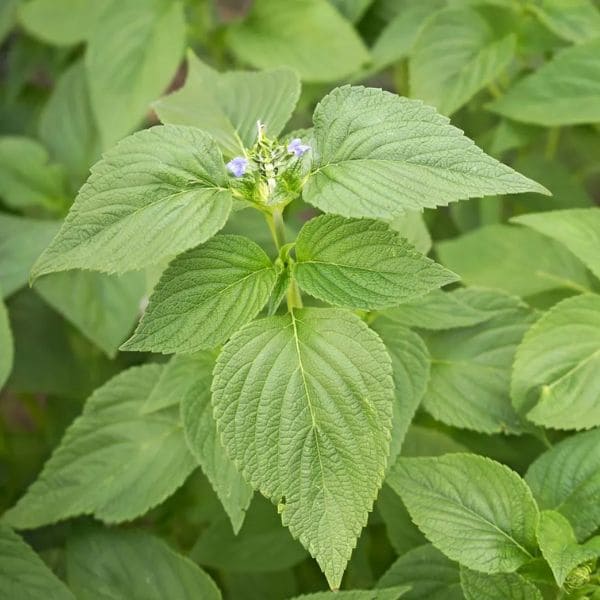
| Scientific name | Salvia hispanica |
| Common name | Chia |
| Plant type | Herbaceous annual |
| Height | 3-4 feet |
| Flower color | Purple or white |
| Seed color | Black, white, grey |
| Sunlight | Full sun |
| Soil | Well-drained soil, pH 6.0-7.5 |
| Nutritional content | High in omega-3 fatty acids, fiber, protein, antioxidants |
| Native range | Central and Southern Mexico, Guatemala |
Propagation From Seeds
You don’t need to dig a hole to bury them; chia seeds are tiny and don’t require deep planting.
Aim to sow the seeds about 1/4 inch deep and space them 12 to 18 inches apart to give each plant enough room to grow. Water them daily, and in about a week, you’ll start to see chia sprouts emerging.
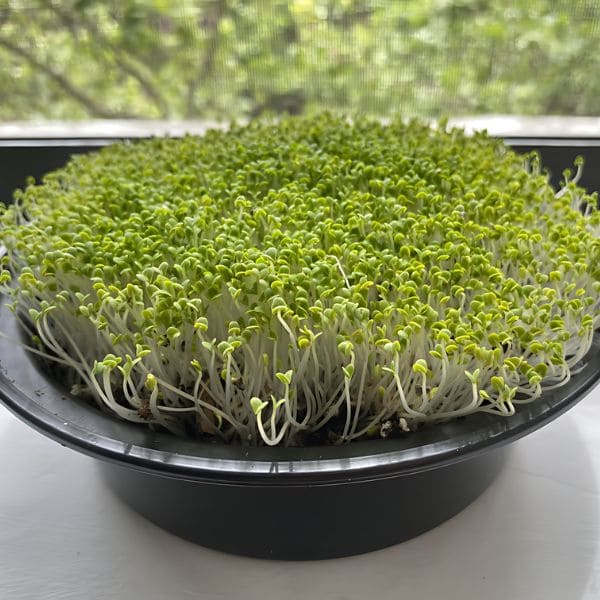
Don’t worry too much about perfection; chia plants are prolific self-seeders, so they’ll often reseed themselves for the next growing season.
Growing Chia Plants
Preparation
There are a couple of varieties of chia seeds you might come across:
- Black chia: approximately 1 millimeter in diameter and rich in antioxidants and omega-3 fatty acids with a slightly strong flavor.
- White chia: approximately 1.2 millimeters in diameter and has milder flavor, often used for aesthetic purposes in dishes due to their lighter color and neutral taste.
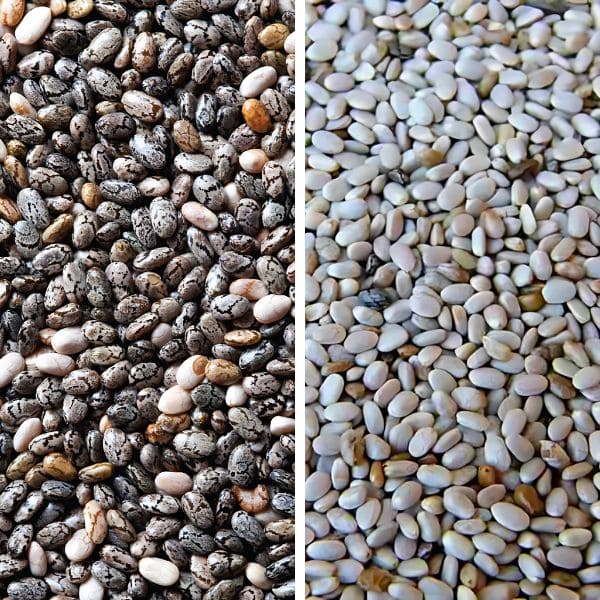
Next, choose a sunny spot in your garden since chia plants thrive in full sun.
The soil needs to be well-drained with a pH between 6.0 and 7.5. I’ve found that adding organic compost to the soil not only improves its fertility but also helps with drainage.
Also, remember to clear the area of any weeds and loosen the soil to a fine texture using a rake or garden fork.
How to Grow Chia From Seeds
The best time to plant chia seeds is in the spring, after the last frost has passed. Chia plants thrive in warm temperatures, ideally between 70-85°F.
Firstly, rake the area lightly to create a fine, well-drained bed then sprinkle the chia seeds evenly over the surface.
You should sow the seeds about 1/4 inch deep. Water the area gently but thoroughly, chia seeds typically germinate within 7 to 14 days and reach maturity in about 90 to 110 days.
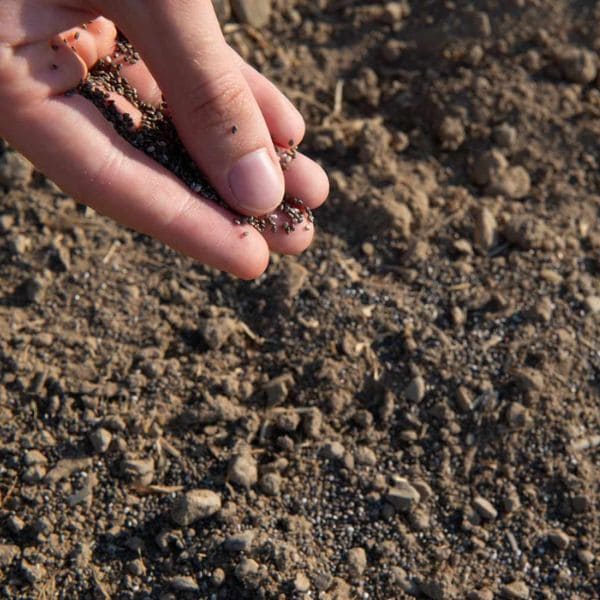
When the seedlings are a few inches tall, thin them about 12 to 18 inches apart to prevent overcrowding.
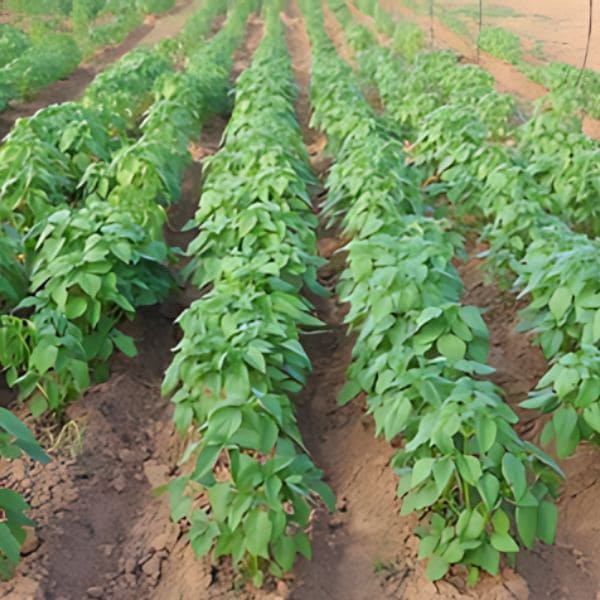
One tip I’ve found helpful is to plant companion plants alongside chia such as basil and marigold to add color to the garden. Avoid planting chia near heavy feeders like corn, which can compete for nutrients.
Care for Chia Plants
Here are the main requirements to ensure your chia plants thrive:
- Chia plants need plenty of sunlight, ideally six hours or more each day.
- Consistent moisture is key, especially during germination. Once established, chia plants become more drought-tolerant.
- Chia plants benefit from occasional feeding.
- Use organic solutions, such as neem oil, to keep aphids and spider mites at bay.
- Maintain soil pH between 6.0 and 7.5 and add compost to improve soil structure.
Light
Chia plants thrive in full sun, needing at least six hours of direct sunlight each day.
I’ve found that the sunnier the spot, the more robust and healthy the plants grow so I chose a location that gets ample morning and afternoon sun in my garden.
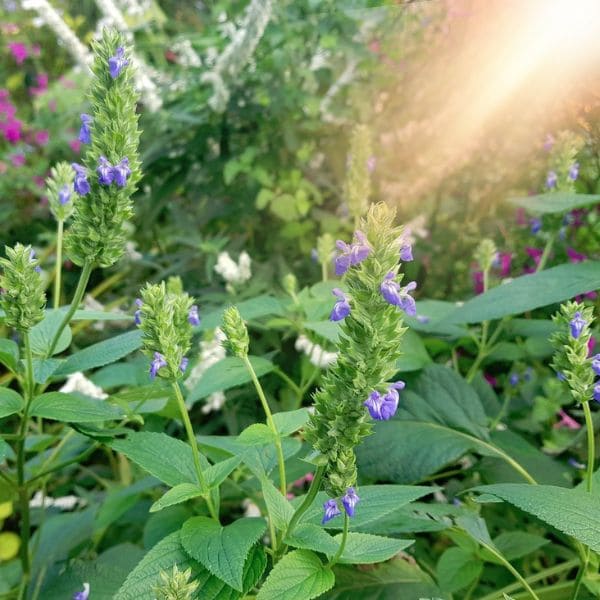
If you’re planting chia indoors, you can consider growing them under artificial light.
I recommend using full-spectrum grow lights to mimic natural sunlight. Place the lights close to the plants and keep them on for about 14-16 hours a day.
Soil
Chia native to Central and Southern Mexico typically grows in well-drained, sandy soils.
However, it’s quite adaptable and can thrive in various soil conditions as long as the soil drains well and the pH is between 6.0 and 7.5.
If you’re considering growing chia in containers, ensure they have good drainage holes.
Additionally, use a high-quality potting mix and add some perlite or sand to improve aeration.
Water
During the germination period, chia seeds need consistently moist soil, so you should provide about 1/4 to 1/2 inch of water per week.
I’ve found that using a fine mist or a gentle sprinkler in the early morning works best to avoid washing away the soil or harming the seedlings.
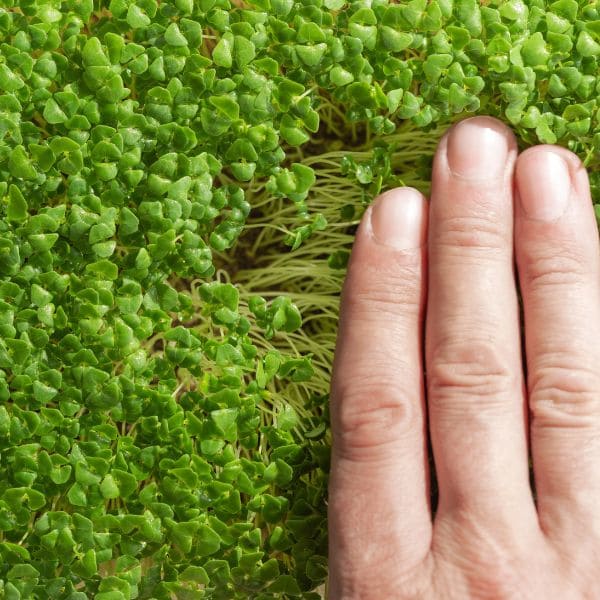
Interestingly, once the plants are established, they are adapted to arid conditions and soils of low fertility.
It’s known as one of the “fire following” species, meaning it can increase in abundance after a fire. (Timbrook et al. 1982).
Temperature and Humidity
Chia thrives in warm temperatures, ideally between 70-85°F. I’ve noticed that they grow best during the warm spring and summer months.
If you’re in a cooler climate, consider starting your chia indoors and transplanting them outside once the weather warms up.
Also, chia plants prefer a moderate level of humidity but are quite adaptable. They can handle the dry conditions and grow well in Hardiness Zones 8-11.
Fertilizer
Chia is naturally adapted to soils of low fertility, so it doesn’t require heavy feeding.
Therefore, applying a light layer of compost to the soil before planting and then again once a month throughout the growing season is enough.
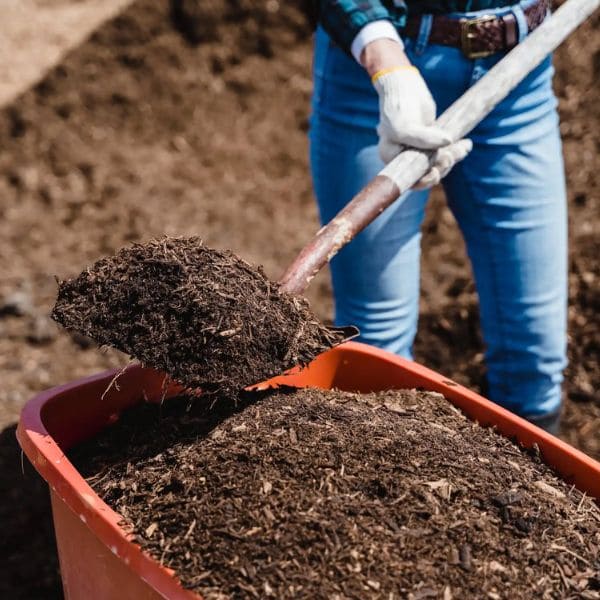
If you prefer using a commercial fertilizer, choose a balanced, all-purpose type, but use it sparingly. Over-fertilizing can lead to excessive leaf growth at the expense of seed production.
Pests and Diseases
In my garden, I’ve encountered a few common pests like aphids and spider mites.
I prefer using organic solutions such as neem oil or insecticidal soap to keep these pests at bay without harming beneficial insects.
Chia plants are quite resilient, but they can occasionally suffer from fungal diseases, so ensure good air circulation by spacing your plants properly.

Common Problems
Leggy Growth
When chia plants become tall, spindly, and weak, it is often caused by insufficient sunlight.
To remedy this, ensure your chia plants receive at least six hours of direct sunlight daily or use full-spectrum grow light.
Root Rot
If you face yellowing leaves and wilting plants, it can be due to overwatering or poor drainage.
To prevent root rot, water your chia plants moderately, allowing the soil to dry slightly between waterings.
Singed Plant
It is characterized by brown, crispy edges on leaves and can occur due to excessive heat or sun exposure.
Therefore, provide shade during the hottest part of the day or mulch around the plants to retain soil moisture and prevent singeing.
Harvest
When the chia plants are about 100 days old and their flowers have dried and turned brown, it’s time you enjoy the crop.
When harvesting, I like to wait for a dry day, ideally in the morning after the dew has evaporated.
I gather my family, including the kids. We use scissors or garden shears to cut the flower stalks from the base of the plant. It’s a simple task that even young children can help with.
Next, we take each flower head and rub it between our hands to release the tiny chia seeds. My kids enjoy this part, as it’s hands-on and quite fun.
Then we simply blow gently, letting the chaff fly away while the heavier seeds fall back into a bowl.
Preservation
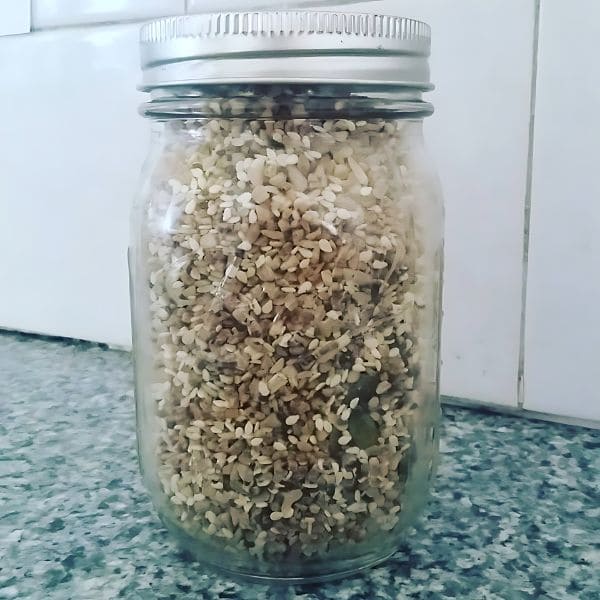
You should let chia seeds dry for a day or two to ensure moisture evaporates and prevents mold or spoilage.
I then transfer the dried seeds into airtight containers. You can consider mason jars and store them in containers in a cool, dark place.
Properly stored, chia seeds can last for up to two years in these jars without losing their nutritional value or freshness.
FAQs
Can chia seeds grow in only water?
Yes. This method is often used for growing chia microgreens. Simply sprinkle the seeds on a damp paper towel or cotton cloth, keep them moist, and they will sprout in a few days.
However, for full plant growth, transferring them to soil is necessary for proper nutrient uptake and development.
How tall do chia plants grow?
Chia plants typically reach heights of 3 to 4 feet. Under optimal conditions, with plenty of sunlight and proper care, they can sometimes grow even taller.
What are chia seeds used for?
Chia seeds are popular in smoothies, yogurt, and oatmeal. They can also be used to make chia pudding, added to baked goods like bread and muffins, or sprinkled over salads.
Additionally, chia seeds are used as an egg substitute in vegan recipes due to their gel-forming ability when soaked in water.
What are the benefits of chia seeds?
Chia seeds are rich in omega-3 fatty acids, which are good for heart health. They also provide a good amount of fiber, aiding digestion and helping to maintain a healthy weight.
Additionally, chia seeds are high in protein, antioxidants, and essential minerals like calcium, magnesium, and iron.
Regular consumption of chia seeds can help improve energy levels, support metabolic health, and reduce inflammation.
